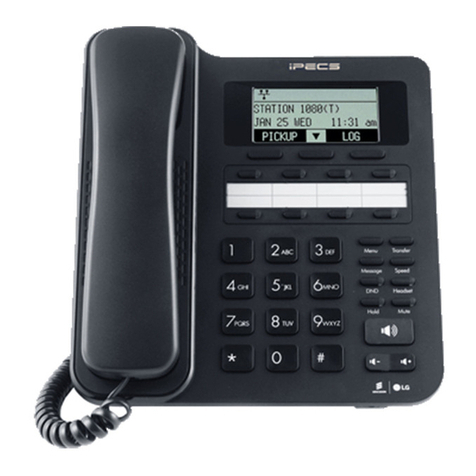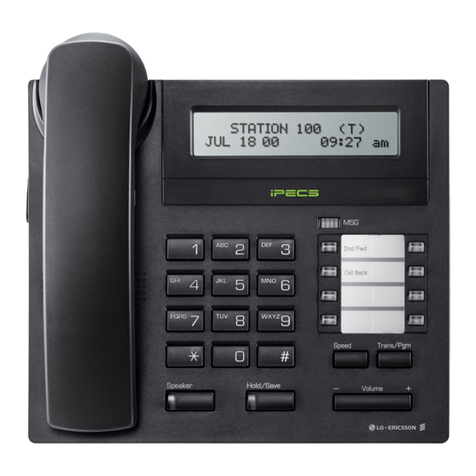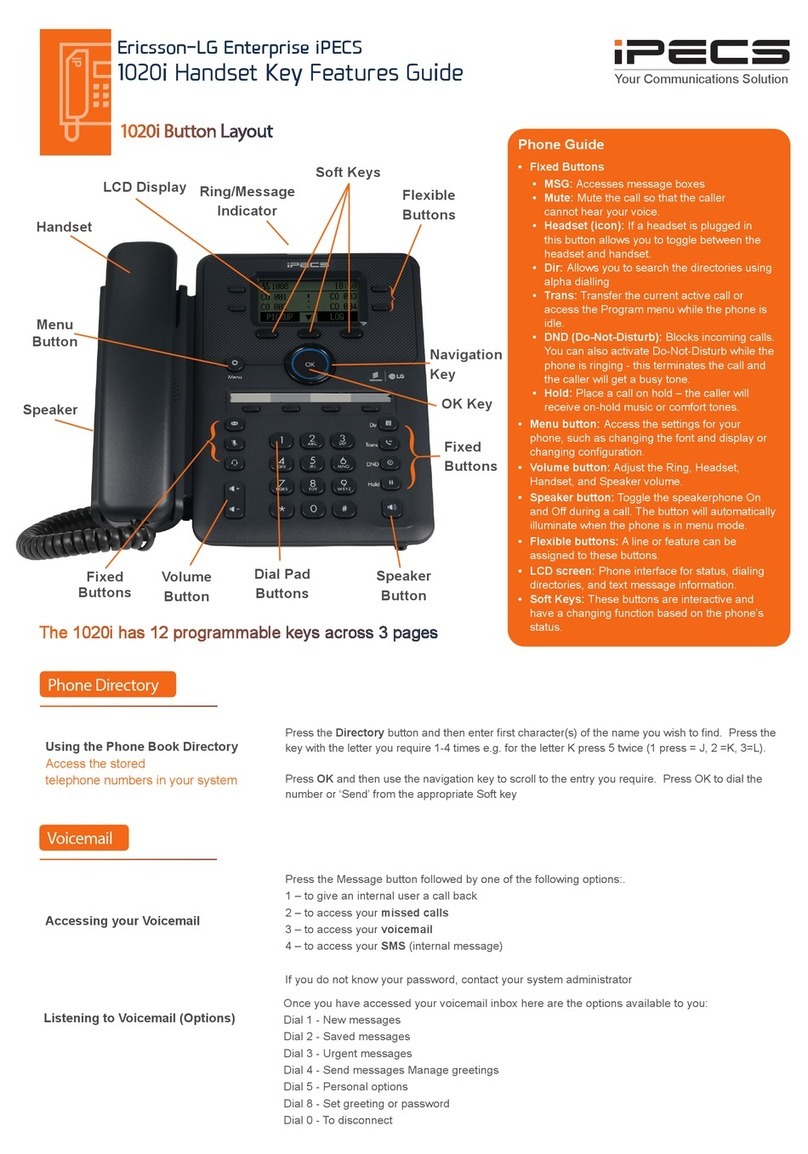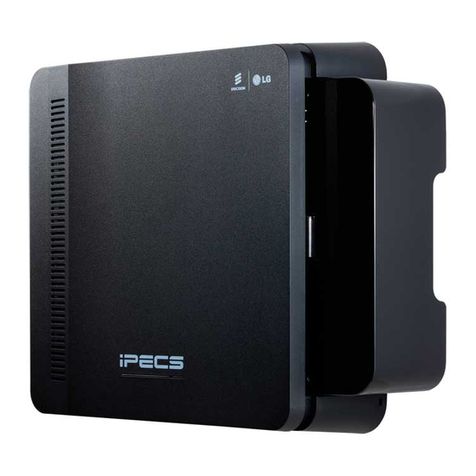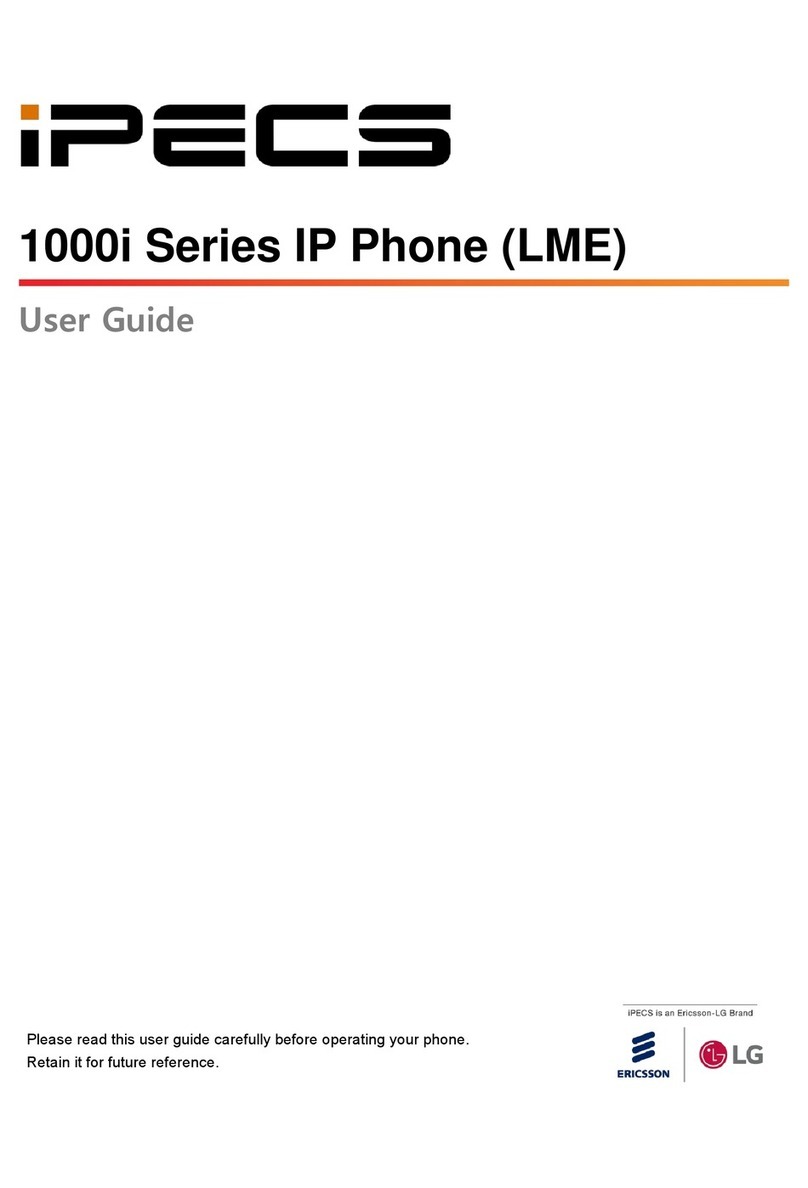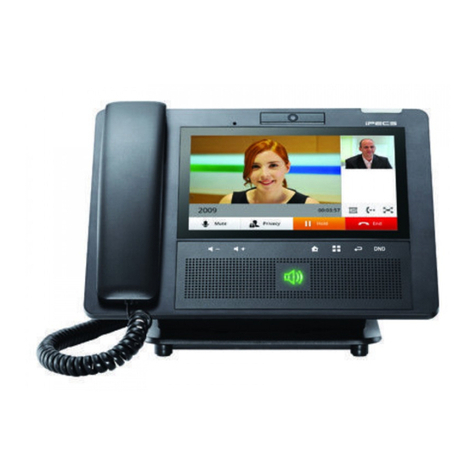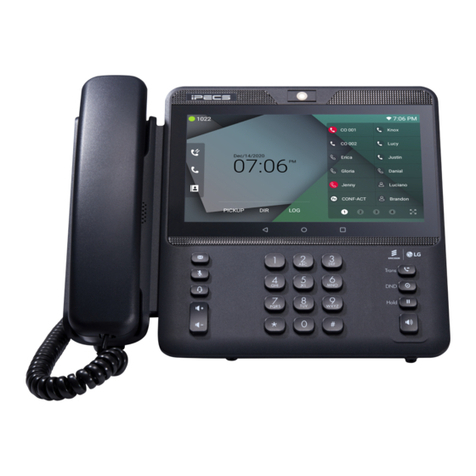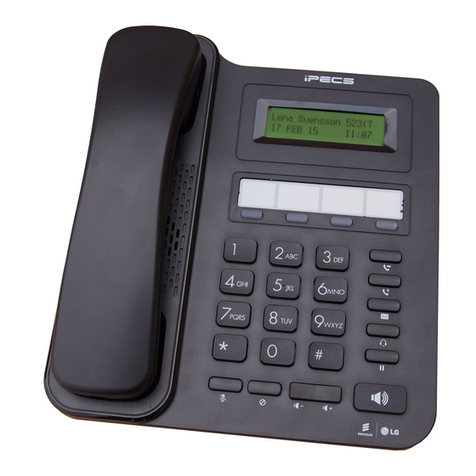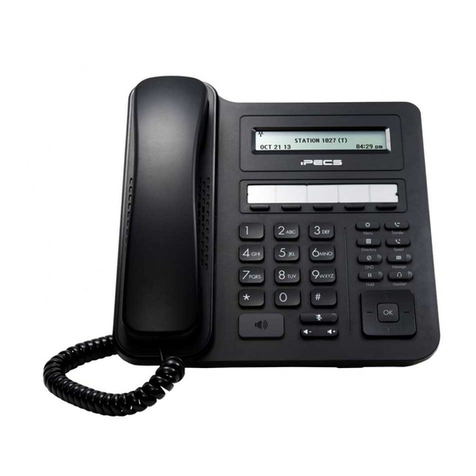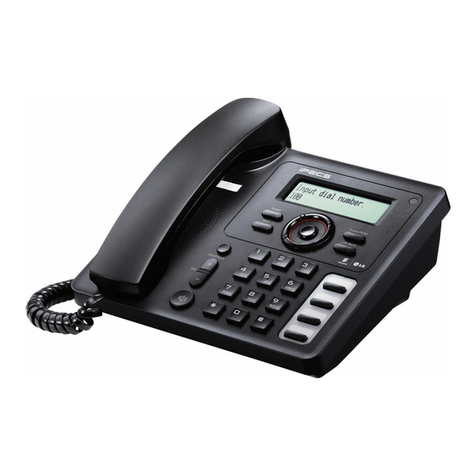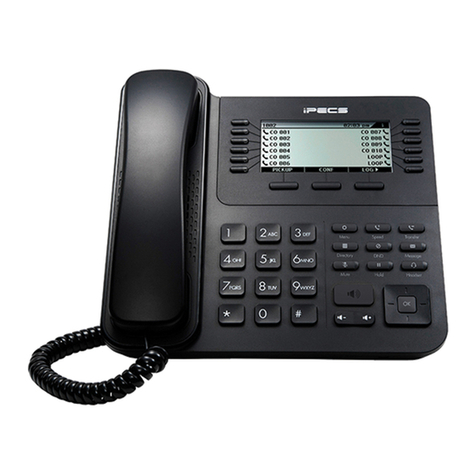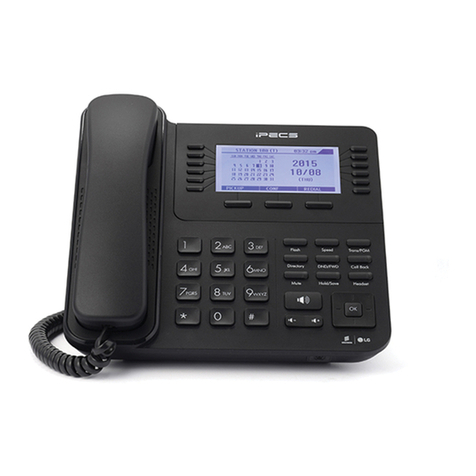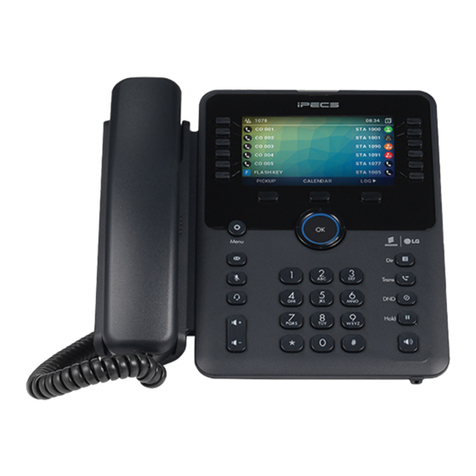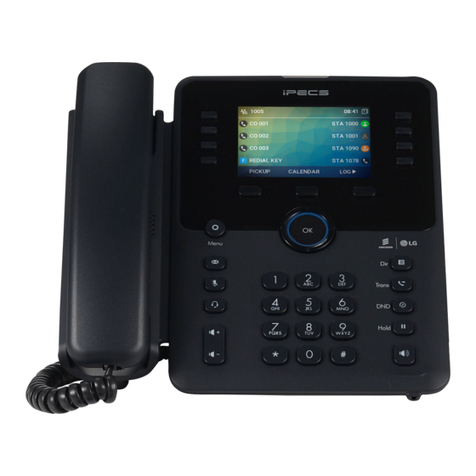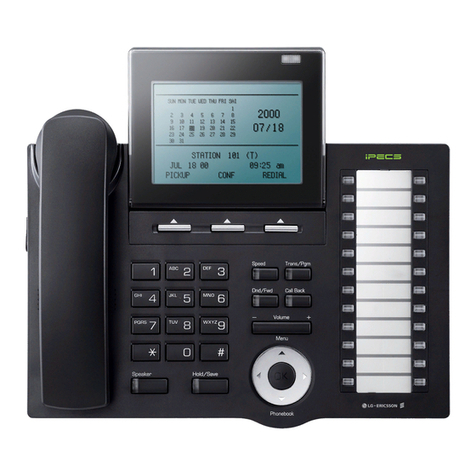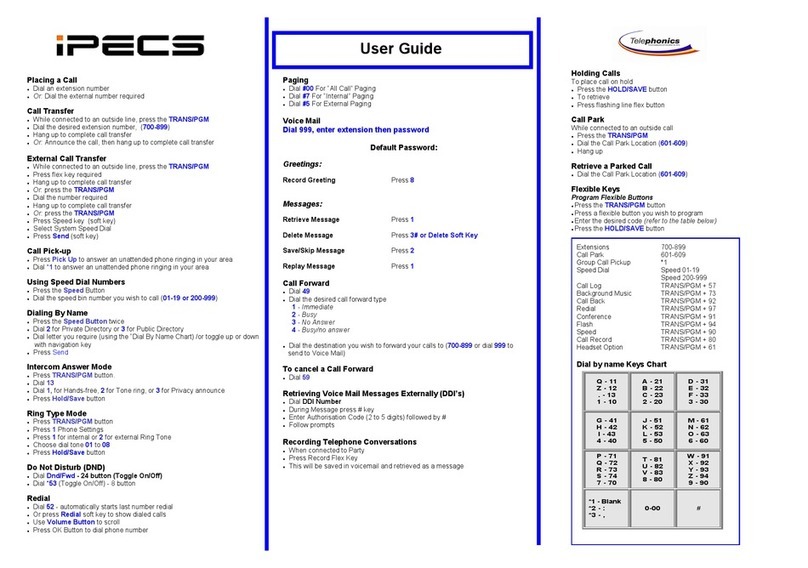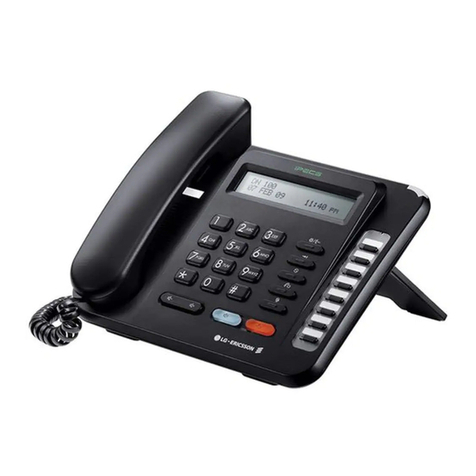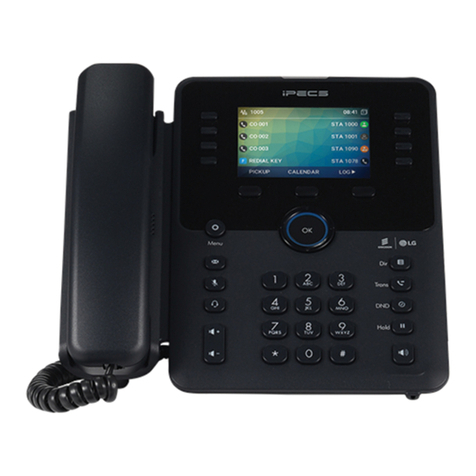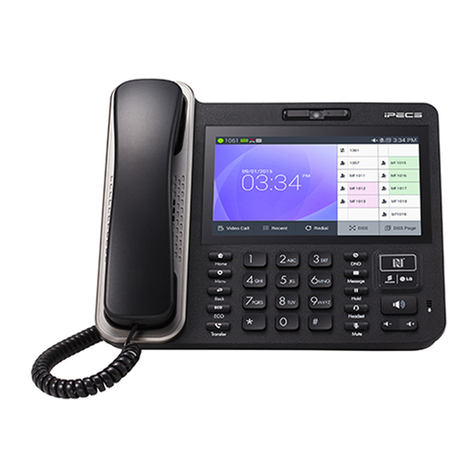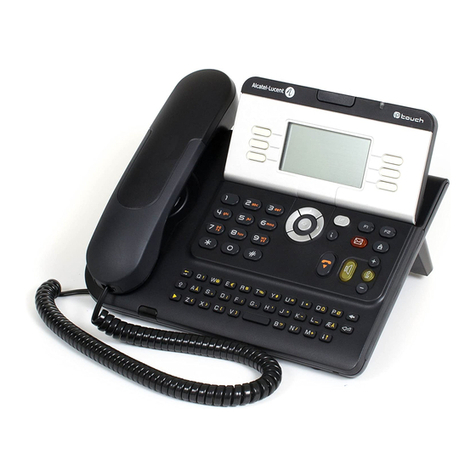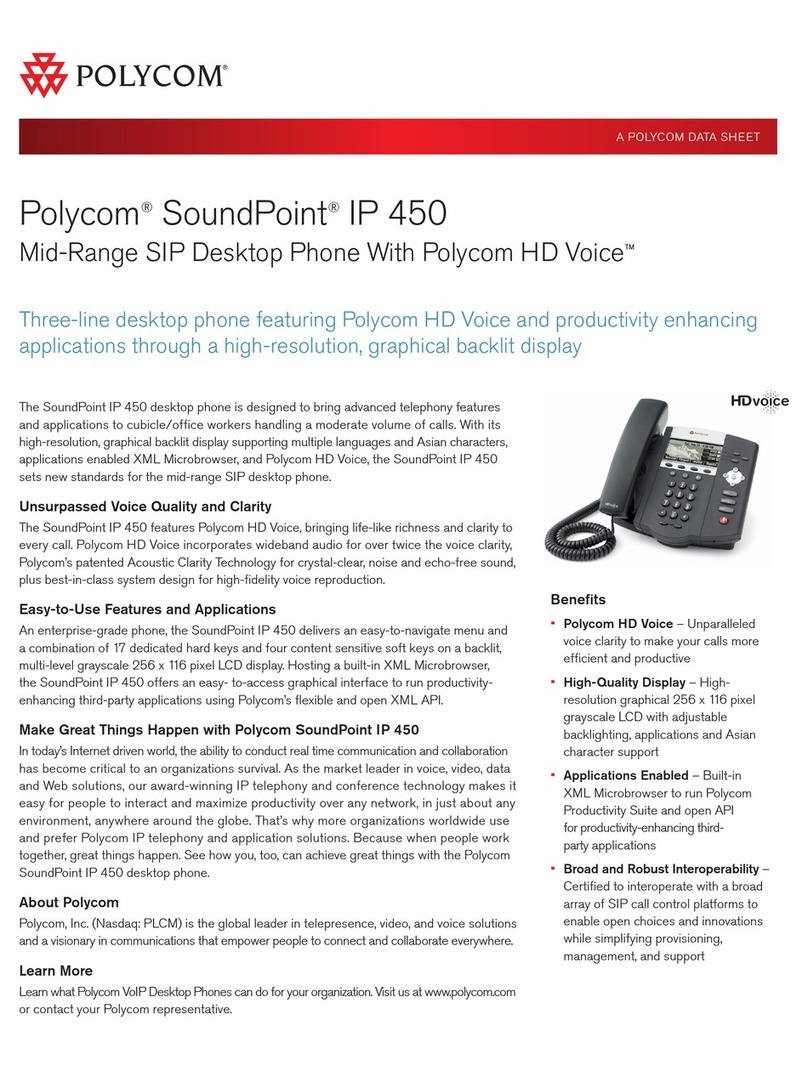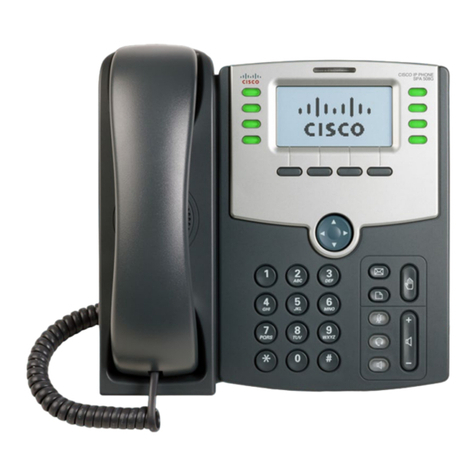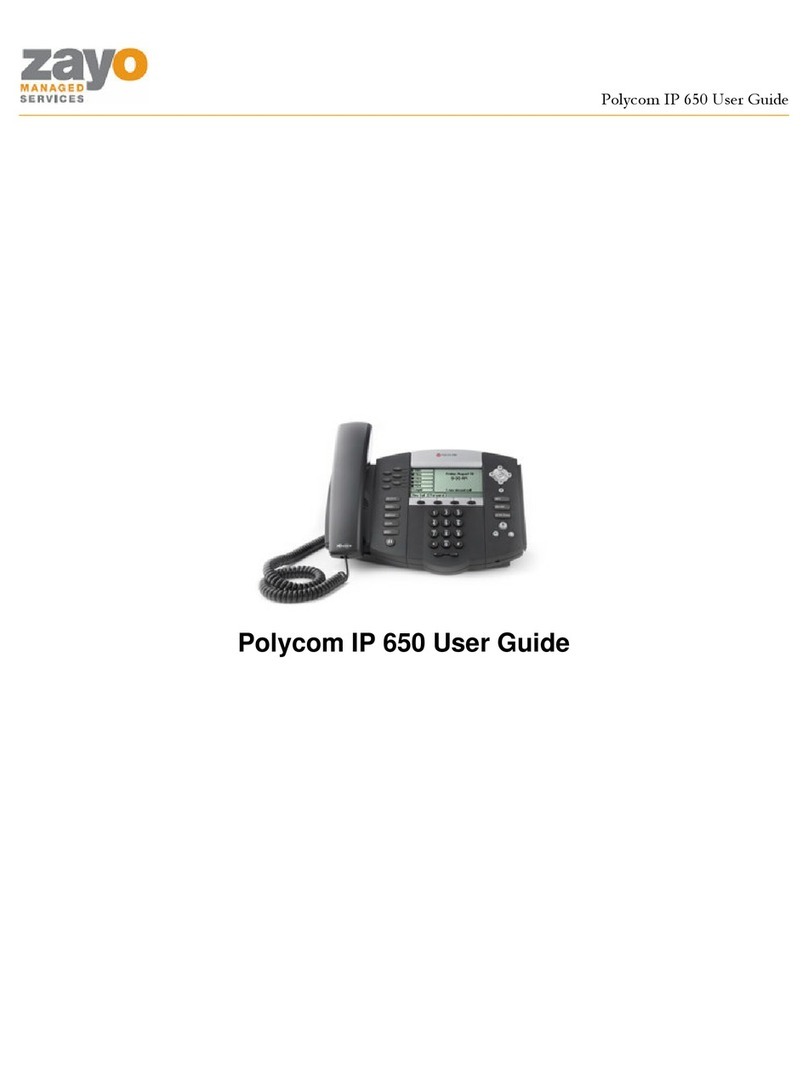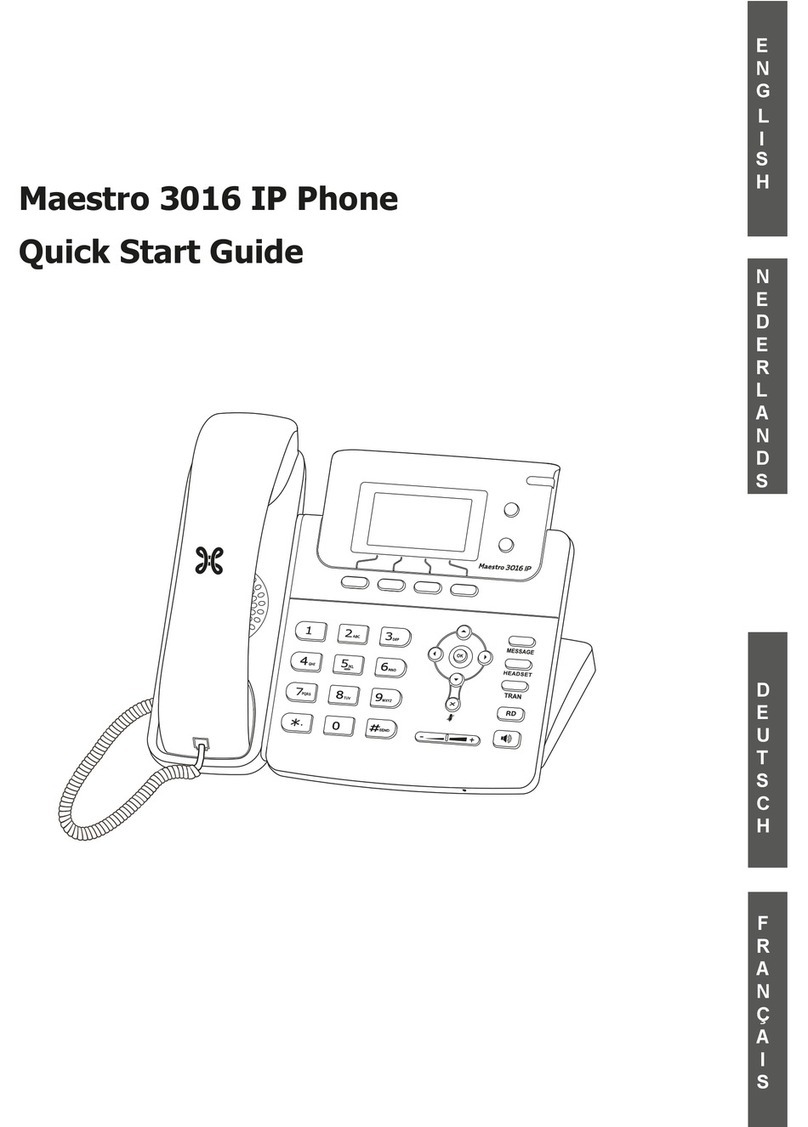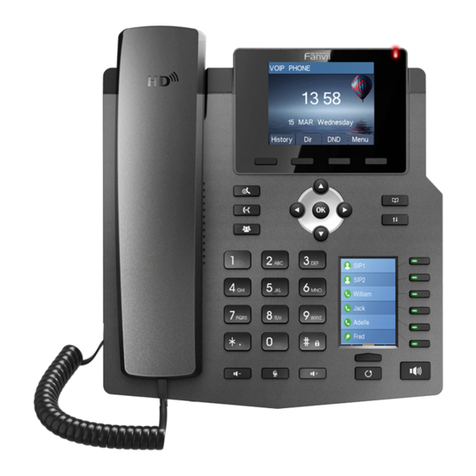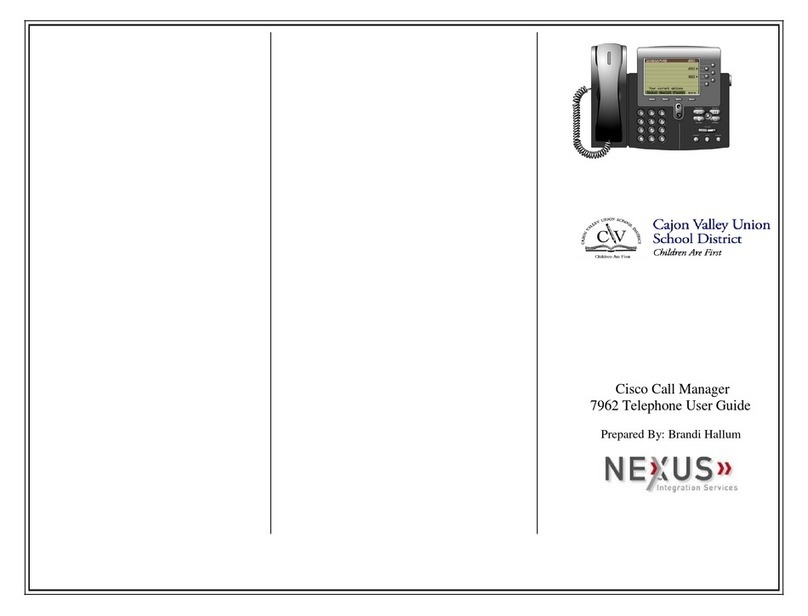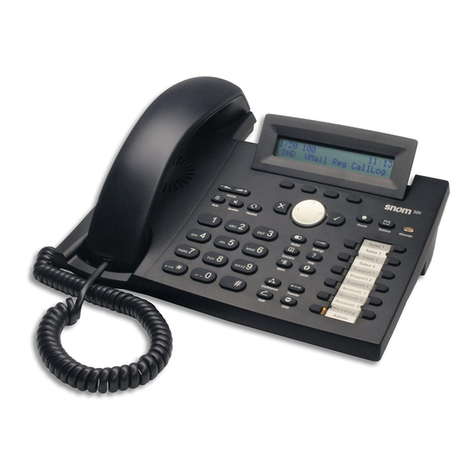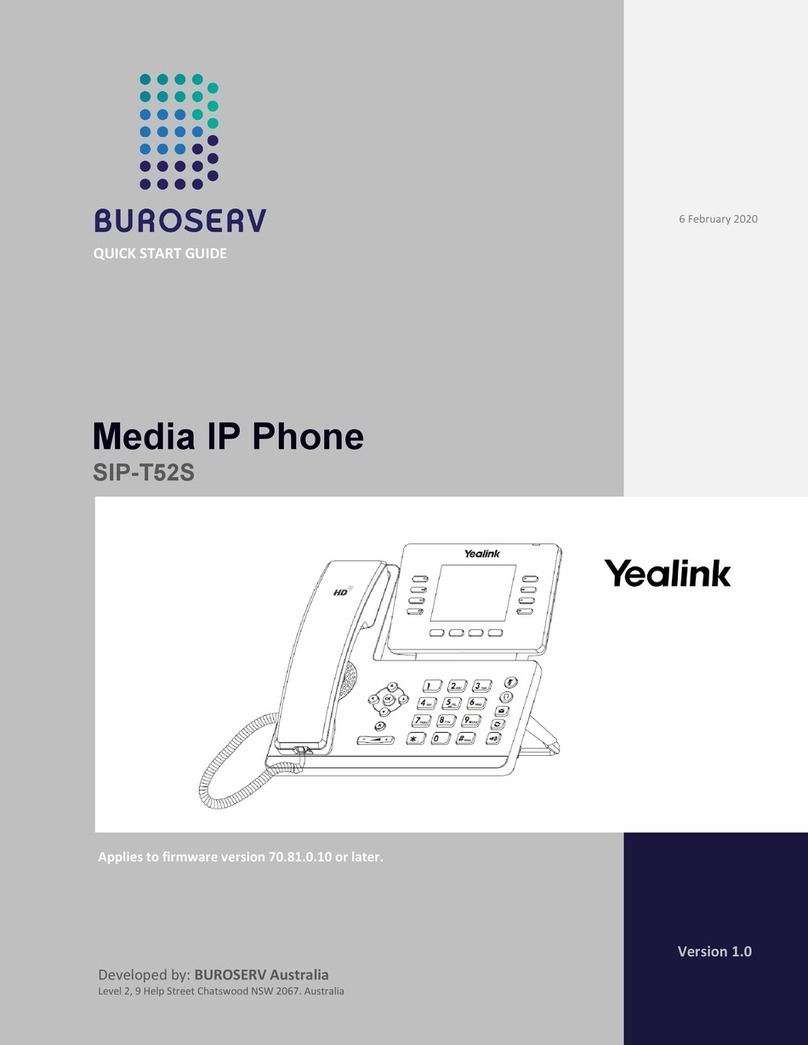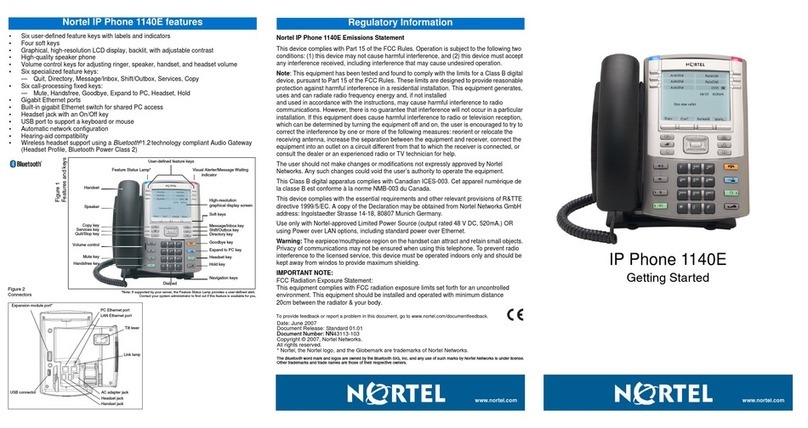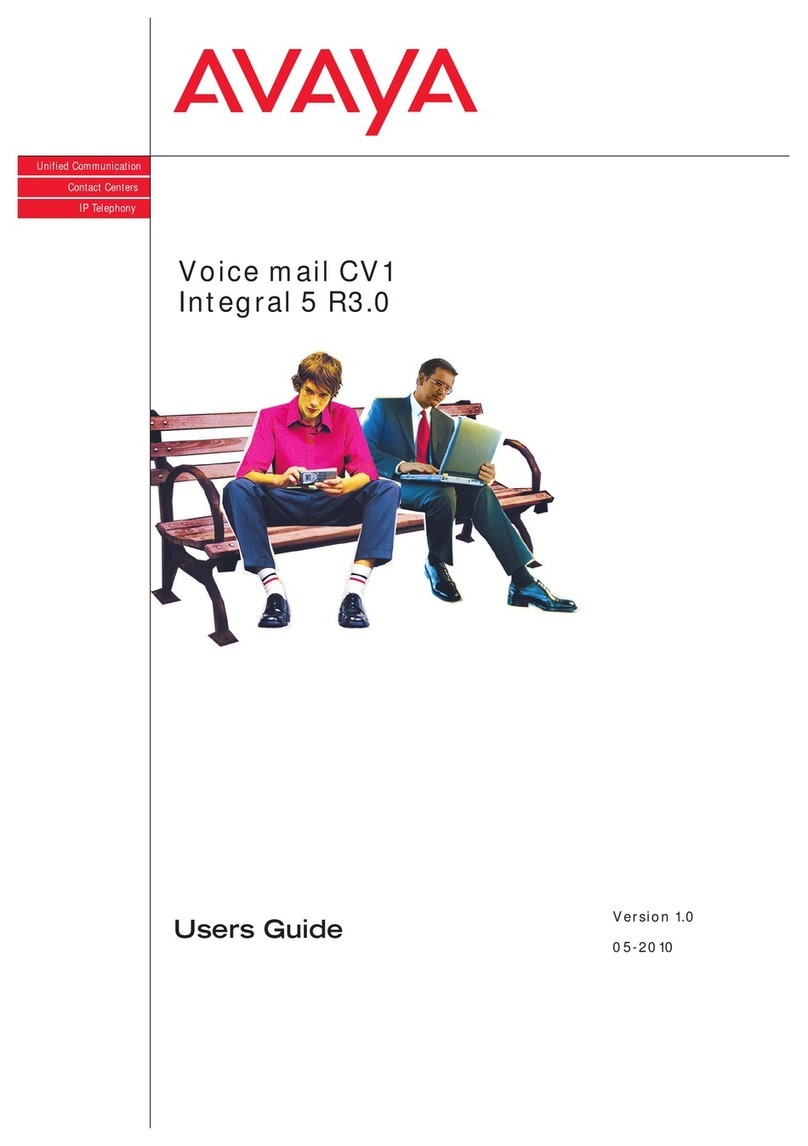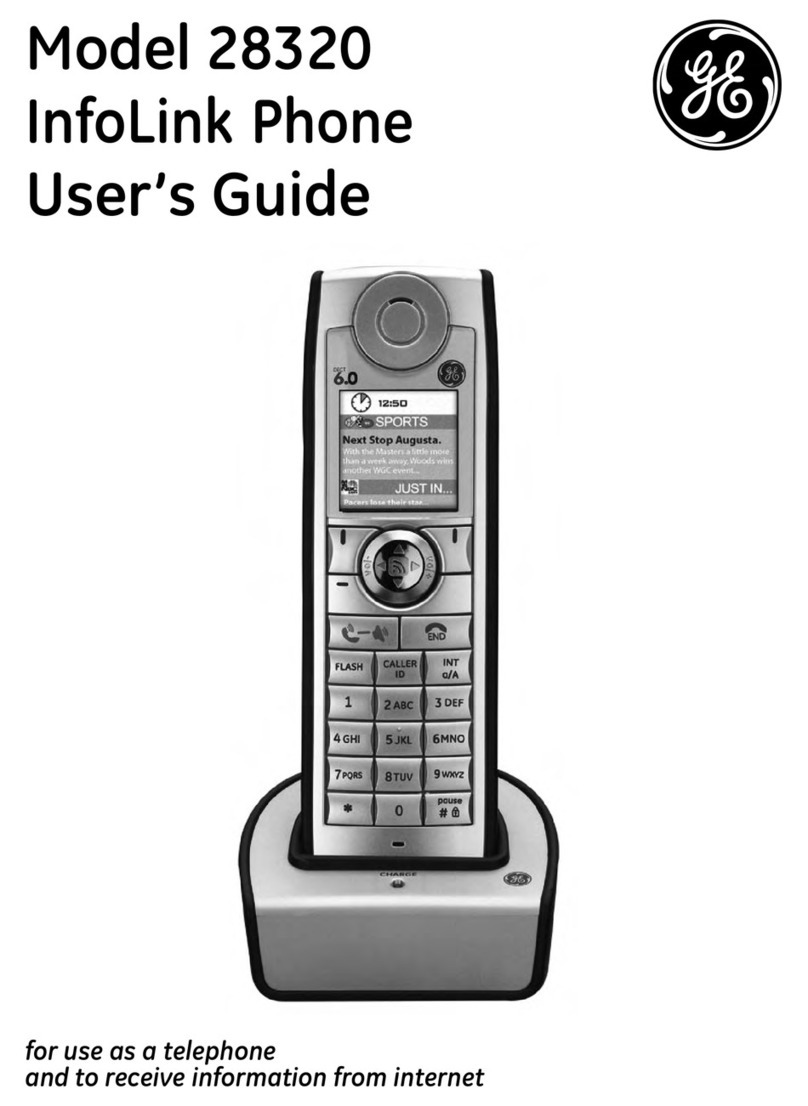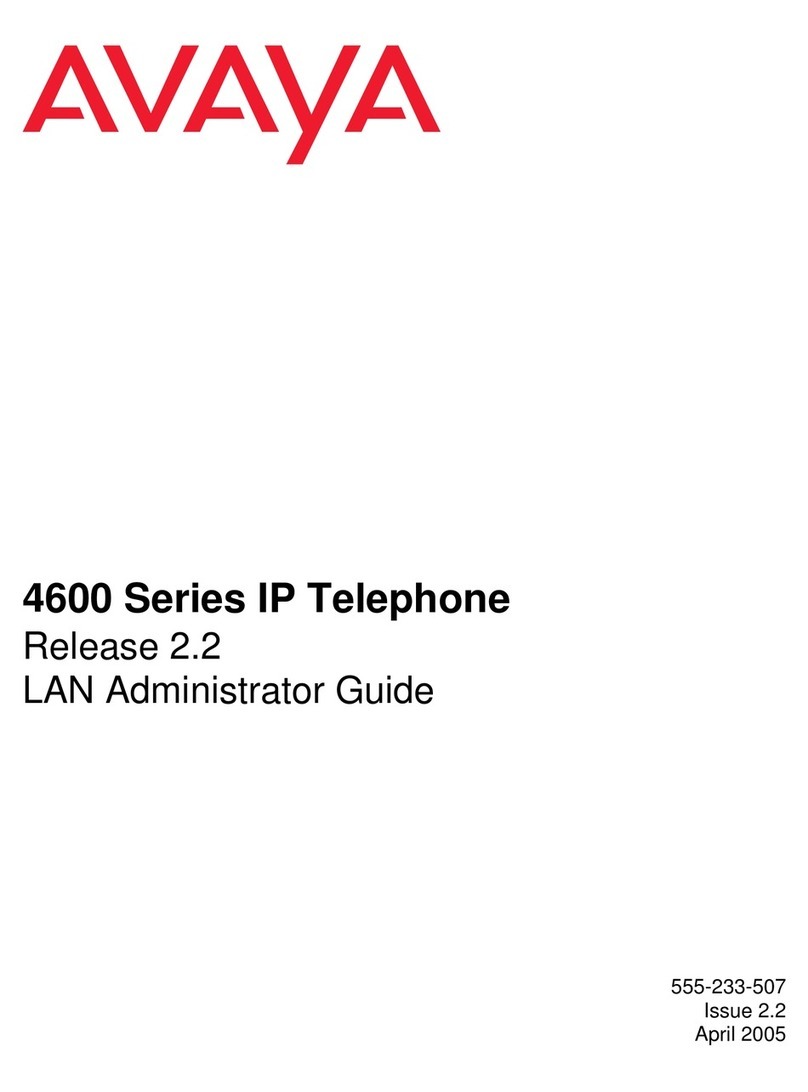LIP-8008D User Guide
ii
3.2.5 To temporarily override dialing restrictions at a phone................................... 20
3.3 USING AUTOMATED DIALING.................................................................................................................. 20
3.3.1 Using Last Number Redial (LNR).................................................................... 20
3.3.2 Using and Entering Saved Number Dial.......................................................... 21
3.3.3 Using System Speed Dial Numbers ................................................................ 21
3.3.4 Using and Entering Station Speed Dial Numbers........................................... 22
4. CALL HANDLING................................................................................................23
4.1 CALL TRANSFER:SENDING A CALL TO A DIFFERENT DESTINATION..................................... 23
4.2 CALL HOLD:PLACING A CALL IN A WAITING STATE...................................................................... 23
4.3 BROKER CALL:SWITCHING BETWEEN TWO CALLS.......................................................................24
4.4 JOINING MULTIPLE PEOPLE IN A CONFERENCE...............................................................................24
4.4.1 Setting up a Conference Room ....................................................................... 25
4.5 CALL PARK:PLACING A CALL ON HOLD TO PAGE......................................................................... 26
5. RETRIEVING &RESPONDING TO MESAGES...........................................28
5.1 RESPONDING TO A STATION MESSAGE WAITING INDICATION............................................... 28
5.2 GETTING VOICE MAIL MESSAGES....................................................................................................... 28
6. REMOTE SYSTEM ACCESS ...........................................................................29
6.1 DIRECT INWARD SYSTEM ACCESS (DISA)..................................................................................... 29
6.2 MOBILE PHONE EXTENSION ................................................................................................................... 29
7. MISC.FEATURES..............................................................................................32
7.1 BACKGROUND MUSIC AND MUSIC ON HOLD (IPECS-LIK)................................................... 32
7.2 USING INTERNAL,EXTERNAL AND MEET-ME PAGING............................................................... 32
7.3 PUSH-TO-TALK (PTT) PAGE................................................................................................................. 33
7.4 WAKE-UP ALARM......................................................................................................................................... 34
7.5 ALARM/DOOR BELL..................................................................................................................................... 34
7.6 POWER FAIL TRANSFER ........................................................................................................................... 35
7.7 SYSTEM VOICE MEMO............................................................................................................................... 35
7.8 CONTRAST (IPECS-LIK)......................................................................................................................... 36
7.9 NETWORK CONFIG...................................................................................................................................... 36
8. PBX, CENTREX &ISDN...............................................................................37
8.1 ACCESS PBX OR CENTREX.....................................................................................................................37
8.2 ACCESS THE ISDNNETWORK...............................................................................................................37
8.2.1 Using the Keypad facility to access ISDN features......................................... 37
8.2.2 Activating ISDN Caller ID restriction................................................................ 38
9. SET FEATURES &FLEX BUTTONS.............................................................39
9.1 ENTERING STATION PROGRAM DATA................................................................................................ 39
9.2 ASSIGNING FEATURES TO FLEX BUTTONS...................................................................................... 39
